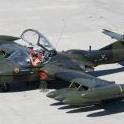Leaderboard
Popular Content
Showing content with the highest reputation on 05/18/2020 in all areas
-
Clayton, were you at Hangar 24 AirFest in 2018? Jenn was the PAO for the CF-18 team back then. She was a hoot... just a lot of fun and energy. OK!. Let's just jump on the knee-jerk train and take action before any causal information is known. Certainly not an example of "thoughtful response".4 points
-
Not a movie, but “The Last Dance” documentary about Michael Jordan and the 90’s Bulls was great.3 points
-
Yeah, I agree that hitting the lotto and having the big 3 all in the same city is totally ideal, but definitely easier said than done. Who wants to live right in NYC, Detroit, or Atlanta anyway (kidding if you are from there). But I try to do my best. Currently 2 hours from the airport, 4 hours from the unit (working on getting into a closer unit), and in town with most family/friends. It's like trying to maximize a math equation with 3 variables, and aside from looking for a closer Guard unit, there's not much I can do as far as moving without taking a QOL loss in some other way. But if you can maximize at least one or two parameters (like living in domicile, or close), than at least do what you can.1 point
-
1 point
-
Hey guys. Update on UPT 2.5 from what I know. To lead, I have no idea if any other base is doing this or if it's just Vance. Was just briefed we're starting UPT 2.5 in July. The timeline is going to be T-6s to Wings in about 7 months. Heavies will find out both airframe and location at/before graduation. Fighter/bombers will continue on in the T-38 to do IFF and some B-Course related stuff. Unsure of their timeframe and exactly what they're going to be doing. As I'm sure we're all aware, the AF is trying to get rid of the T-1. Well, this is where they're starting. Looks like they'll be either completely removing the T-1 from the syallabus and replacing it with only T-1 transition to a heavy airframe Sims...or doing a mixture. T-1 timeline is guesstimated at about 2 to 3 months. Then off to Altus or Little Rock or San Antonio. Unsure if they're planning on extending those secondary trainings or if their idea is to place a lot more training on the gaining unit. Again, I'm not involved in the planning of any of this. Just what we've been briefed as the OSS at a UPT base. Feel free to ask any questions!1 point
-
Unfortunately for many that just won't ever be a realistic option. That said, if you can make it happen, it makes this job such an awesome gig. I live an hour from the employee lot, 8 minutes from the Guard and 30-45 minutes from all of my family...better lucky than good! It's why I would much rather go to our lowest paying category to stay in my current base than commute to stay on higher paying categories. What 2020 said above is spot on. I'd much rather be furloughed than be forced to commute to be a plug on a NB in NYC. I don't expect it will, but if it came to that, I'd probably take a voluntary furlough. Between part-time pay, my rentals and other side income opportunities, I'd rather not commute to sit in a crashpad in NYC for a year. It's events like this that illustrate the words I pass to all my buddies who think they'll ever go to airlines. If you're considering the airlines, do it ASAP, don't screw around for years making a decision. A few friends scoffed and said "the airlines are not for them," and even gave me a rash of shit about going to the airlines. Fast forward 3 years and suddenly they decided the airlines, in fact, ARE for them...and they're suddenly not giving me shit lol. So now they're 3,000 number junior to me and looking at either commuting to NYC or possibly being furloughed. I'm expecting to just be bumped back to a narrow body in my current base. Of course some delayed to get closer to an AGR pension, which I get to an extent. But this situation will be a boon for those who were just outside 5 years to go to an AGR pension.1 point
-
PreContact, I'd like to see a post in YOUR words, not an eight-year old article posted without comment. Can you summarize? I am very aware of the RCAF and the Department of National Defence's discussions about the future of the team for the past decade How does THIS mishap relate to YOUR position that they should be grounded? Nickel on the grass for Jenn.1 point
-
In the simplest terms yes. It's of course more nuanced than that, but to your question of downward displacement (both in seat, equipment, and yes even domicile) you got the right idea. Like I said it's nuanced, because there's also fleet capacity shuffling which affects the net effect of said displacement on an usually smaller fleet total than pre-furloughs, but again, you're in the ballpark. That's why you hear some folks utter the words "there are worse things than getting furloughed", and they're not being ironic when they're implying not getting furloughed can be worse. Being the QOL/schedule plug in your late40s/50s is one such of those insinuations. A lot of people don't have the stomach for that kind of scheduling reset in what is supposed to be the highest grossing years of their lives, and usually their highest overhead years (for the ones with children who are hitting college). It's also the reason many late 40s/50s career changers stuck in the regionals when these musical chairs stop, decide to exit the industry outright. In essence, they don't have the luxury of time to endure that collegiate quality of life over the pedestrian opulent luxuries like weekends offs, that they could attain in their measly 30s in a different industry. Which is why when people say the job is not for everybody, I find it a heavily understated utterance. On the other side of the silver linings spectrum, you had many mil pilots in the lost decade made absolute bank by attaining an active duty retirement they thought they had left on the table, by virtue of being furloughed. Coming back to airlines with true free agency courtesy of that check and lifetime universal healthcare well before the age of 65. Of course, a few decided the juice wasn't worth the squeeze after 7 years of being home every night in the ARC, and just bypassed the airline recalls anyways and never returned. Others did return for a little then bailed when it was convenient for whatever they had going on at the time. How people cope with those lifestyle displacements in middle age is a very personal thing, since it relies a lot on people's life stage and what's going on at home, and the composition of the home of course. Good luck to all.1 point
-
I can 100% confirm they will see it as a positive. I was in a similar situation to him and turned down a CSO offer last year. Everyone I've mentioned it to during squadron visits, Zoom meetings and phone calls from Guard/Reserve squadrons saw it as dedication to being a pilot and said they would have done the same thing.1 point
-
Perpetual war is not the bug, it's the feature. The mission is pork barrel baby, we're just the patsies. There's a few people in life I'd take a bullet for, none of them currently populate our 3 branches of federal government.1 point
-
I still just want to know why they pulled Zoe Kotnik. I get privacy and all, but seriously...just want to know, know. ~Bendy Sent from my iPad using Baseops Network mobile app1 point
-
The Columbus tanker guys have been deployed out here in Guam for the last little bit so that could be why they've been quiet on replies lately. Hope that's helpful.1 point
-
Lol got it thanks message sent. And my bad I really thought it was a rocket ship shooting lasers. I'm gonna have a talk with this eye surgeon.1 point
-
The air force is also looking at the purchase of a new trainer for fighter pilots, according to a report in late June in the U.S. publication Flightglobal. No cost was provided for that potential purchase. Dan Dempsey, a former Snowbirds commanding officer and team leader, said the air force’s decision to start moving on a replacement aircraft was welcome news. “This is a very, very positive development,” said Mr. Dempsey, a retired lieutenant colonel. He said there are always going to be budget pressures on the Canadian Forces, but he pointed out that a new aircraft will last the team for another 30 or 40 years. “Yes, it’s not a hard-core combat capability, but it is an essential, and in my mind integral, component of the Canadian Forces because recruiting and public relations are always going to be vital.” But spending $755-million on new aircraft for the Snowbirds is an extravagance, says Steve Staples of the Rideau Institute, the Ottawa research and communications group. “The Snowbirds, while entertaining, are a luxury at a time when people are losing their jobs, the economy is hurting and the government is in debt,” said Mr. Staples, who argues that too much is being spent on the military. “It’s a huge cost for air show entertainment.” The air force has put in place a maintenance contract that will cover the Snowbirds aircraft until 2020. In February the government awarded a contract to IMP Aerospace in Halifax to maintain the military’s fleet of 25 CT-114 Tutor aircraft, the RCAF email to Postmedia News said. The three-year contract is for routine preventive maintenance and repairs, with the work taking place at Canadian Forces Base Trenton, Ont. After that the contract has the provision to be renewed annually over seven years, each time for a one-year period. The planes have been in the Canadian Forces inventory since 1963 and have been used by the Snowbirds team since 1971. In the past the air force has examined leasing aircraft for the Snowbirds. It also looked at, but rejected, a suggestion to substitute the CF-18 fighter aircraft for the Tutors. Using CF-18s would increase the ability of the Snowbirds to perform around the world but reduce their availability for smaller venues in Canada that have runways too short to accommodate the jets, the air force concluded. In addition, the CF-18s would be 20 times more expensive to operate than the Tutors. From 2016: https://www.cbc.ca/news/politics/snowbirds-tutor-jets-replacement-1.3689876 Military studies extending life of Snowbird aircraft 20 years past retirement The military's aging fleet of Tutor Snowbird jets could remain in flight until 2030 — two decades past their scheduled retirement date, according to documents obtained by CBC News under an Access to Information request. The Royal Canadian Air Force show team, the Snowbirds, perform the diamond formation pass over the Peace Tower during Canada Day celebrations on Parliament Hill on July 1, 2016. (Justin Tang/Canadian Press) The military's aging fleet of Tutor jets flown by the Snowbirds demonstration team could remain in flight until 2030 — two decades past the scheduled retirement date. Documents obtained by CBC News under an Access to Information request show the Department of National Defence is studying the feasibility of keeping the Canadian-built CT-114 Tutors in operation until 2025 and 2030, despite some "significant concerns" about the aircraft. CBC camera flies with Snowbirds Fighter jet debate rages Sajjan consults on CF-18 replacement The aerobatic show team thrills spectators by swirling the skies in precise formations, demonstrating the superior skills of pilots commanding the planes. But there have also been serious safety incidents in the past, ranging from seatbelt malfunctions to fiery fatal crashes. The 1960s-era jets were set to retire in 2010, but that date was extended 10 years, despite an internal 2003 report that warned of escalating technical, safety and financial risks and urged the fleet be replaced "immediately." Little progress in replacement More than 13 years later, there has been little progress in procuring new planes. A report from the fall of 2014 cleared the fleet as "technically airworthy," but noted "significant" concerns, including some caused by financial restraints. "Repairs have been reduced to bare bones (one year support) necessitating to put main items in repairable reserves and depleting our stock levels to nothing," it reads, adding this has the effect of creating "more robbing actions and additional maintenance costs." It also noted a "lag in data analysis/reporting" was causing the Snowbirds 431 Squadron to continue flying aircraft "with an unknown condition." A briefing note for the air force, also released under Access to Information, said the department is carrying out a robust life-expectancy extension study to "validate" the option of using the Tutors beyond 2020 to ensure an "uninterrupted" capacity. "Maintaining a military air demonstration team is considered to be a government-mandated requirement," said the memo, written when the Conservatives were in office. Pushing the retirement planes to 2030 would make some of them roughly 67 years old at that point. The life-extension study is expected to be complete by the end of 2016, but the most recent Defence Acquisition Guide, a public listing of anticipated procurements, suggests the contract award and replacement delivery could be between 2026 and 2036. Tutor 'extremely reliable' Retired lieutenant-colonel Dan Dempsey, a former Snowbird pilot who has written a book about Canada's military air show history, said the Tutors have proven extremely reliable over the years. The planes, used as training aircraft until 2000, are tested by technical experts who leave "no stones unturned" to ensure structural integrity, he said. While Dempsey would have liked to see earlier steps to replace the fleet — and have it in place for Canada's 150th birthday next year — he suggested 2025 is a "reasonable limit" as budget cuts pushed the procurement behind other operational priorities. "I'm not surprised this has happened. It's a little disappointing, but I think the main thing is that everybody recognizes the importance of the Snowbirds to the country, to the Canadian Forces, to the RCAF," he said. "And therefore the desire is to keep these flying as long as necessary until a new aircraft can be purchased, and I think that's a very positive thing." Kim Nossal, a professor with the Queen's University Centre for International and Defence Policy, sees no problem with extending the lifespan, since most accidents involving Tutors have resulted from risky manoeuvres or pilot error, not aging parts. "As long as the aircraft has updates and refits, you can extend the life of an airframe however long you like," he said. "The real risk for the demonstration team is what they end up doing — the kind of performances they put on." Snowbirds showcase never-before-seen footage from belly of plane 0:58 Retired colonel Paul Maillet, a former RCAF planner, says the concern is less about safety than value for money. He doesn't believe the demonstration team adds to the operational capacity of the military other than to entertain and help recruit — functions other military planes could fulfil, he said. Scrap Snowbirds? At a time of tight budgets, he questions if the Snowbirds should remain a funding priority. "You start to cut non-essential things to fund essential things," he said. "Basically, it's recruiting, it's public relations stuff.… and does the taxpayer want to pay for that?" According to figures provided by National Defence, hourly operational costs are $14,350 and the total annual cost to run the squadron is $4.3 million. Retired lieutenant-general Lloyd Campbell, former chief of the air staff, said the fleet is relatively economical and he believes Canadians would be disappointed if the Snowbirds were grounded. "They're a tremendously unifying national organization that Canadians find appealing," he said. "They're a great recruiting tool, but the whole question of should we keep them, can we afford them … that is really less military in nature and more political and national in scope. Is this something Canadians want? If so, how do we make it affordable, how do we make it safe?" A spokeswoman for Defence Minister Harjit Sajjan said the Liberal government remains committed to the Snowbirds, noting the life-expectancy study will help guide the decision-making process for a replacement fleet. "We have full confidence in the RCAF's ability to ensure aircraft reliability going forward, while our government will continue to build Canada's defence capabilities to ensure our men and women in uniform have safe, reliable equipment," said Renée Filiatrault. 'Safe and effective' aircraft A RCAF spokesman said the number of aircraft grounded due to safety or maintenance concerns varies from day to day and is managed by maintenance crews to meet airworthiness standards. "The CT-114 is a safe and effective aircraft," Maj. Scott Spurr said in an email. "DND is dedicated to ensuring that the fleet will remain effective until the fleet is retired. The Snowbirds, and the entire RCAF, maintains a robust flight safety and airworthiness program to ensure the safety of the public, as well as our personnel and aircraft." The famous Snowbirds touch down at the Cold Lake Airshow to show off their stuff.0:58-3 points
-
-6 points








